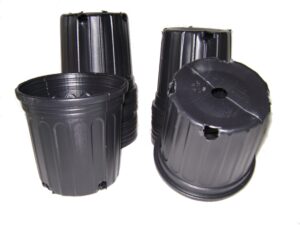
Snake plants, also known as Sansevieria, have earned their place as beloved houseplants for their striking appearance, resilience, and air-purifying properties. While the traditional snake plant (Sansevieria trifasciata) is widely recognized, there exists a fascinating array of snake plant varieties, each with its own unique charm and characteristics. In this article, we delve into the diverse world of snake plant varieties, showcasing common favorites, lesser-known gems, and rare exotics, complete with names and pictures to inspire plant enthusiasts.
Common Snake Plant Varieties
A. Sansevieria trifasciata
- Description and Characteristics: Sansevieria trifasciata, the quintessential snake plant, boasts sword-shaped leaves with dark green coloration and horizontal bands of lighter hues. Its architectural form and low maintenance requirements make it a popular choice for indoor settings.
- Popular Cultivars: Varieties such as ‘Laurentii,’ ‘Moonshine,’ and ‘Black Gold’ are coveted for their unique leaf patterns and color variations, ranging from golden edges to silvery-grey hues.
- Unique Features: Sansevieria trifasciata exhibits tolerance to low light conditions and neglect, making it an ideal choice for beginner gardeners or those with limited indoor gardening experience.
B. Sansevieria cylindrica
- Physical Attributes: Sansevieria cylindrica, also known as cylindrical snake plant or African spear plant, features cylindrical, upright leaves that resemble long, pointed spears. Its distinctive shape and compact growth habit make it a versatile addition to modern interiors.
- Notable Cultivars: Varieties like ‘Boncel’ and ‘Starfish’ showcase variations in leaf curvature and arrangement, adding visual interest to indoor plant displays.
- Growth Habits: Sansevieria cylindrica thrives in bright, indirect light and well-draining soil, requiring minimal watering and maintenance to flourish in indoor environments.
C. Sansevieria masoniana
- Distinctive Traits: Sansevieria masoniana, commonly known as whale fin or shark fin snake plant, features broad, paddle-shaped leaves with unique mottled patterns and wavy margins. Its large size and bold foliage make it a statement piece in any indoor or outdoor setting.
- Cultivar Variations: Varieties like ‘Victoria’ and ‘Golden Flame’ showcase variations in leaf coloration and markings, ranging from light green to yellow-gold hues.
- Growth Requirements: Sansevieria masoniana thrives in bright, indirect light and well-draining soil, requiring occasional watering and protection from frost in cooler climates.
Lesser-known Snake Plant Varieties
A. Sansevieria boncel
- Unusual Appearance: Sansevieria boncel features compact rosettes of cylindrical leaves with distinctively patterned markings, resembling miniature barrels or bonbons. Its diminutive size and ornamental foliage make it an intriguing addition to succulent gardens or indoor displays.
- Cultivation Considerations: Sansevieria boncel prefers bright, indirect light and well-draining soil, with occasional watering during the growing season and reduced moisture during dormancy.
- Ornamental Value: Despite its small stature, Sansevieria boncel offers decorative appeal with its compact growth habit and eye-catching leaf patterns, adding texture and interest to plant compositions.
B. Sansevieria kirkii
- Morphological Characteristics: Sansevieria kirkii features broad, lance-shaped leaves with distinctive mottled patterns and contrasting markings. Its robust growth habit and striking foliage make it a standout specimen in both indoor and outdoor landscapes.
- Cultivar Diversity: Varieties like ‘Metallica’ and ‘Coppertone’ showcase variations in leaf coloration and intensity, ranging from deep green to bronze-red hues.
- Landscape Applications: Sansevieria kirkii is well-suited for tropical gardens, xeriscapes, and container plantings, providing architectural interest and drought tolerance in diverse climates.
C. Sansevieria zeylanica
- Unique Foliage Features: Sansevieria zeylanica boasts long, sword-shaped leaves with bold, vertical striping and glossy texture. Its upright growth habit and elegant foliage make it a classic choice for indoor greenery.
- Cultivation Tips: Sansevieria zeylanica thrives in bright, indirect light and well-draining soil, tolerating periods of drought and low humidity with ease.
- Aesthetic Appeal: With its timeless beauty and resilience, Sansevieria zeylanica adds a touch of sophistication to any interior space, serving as a focal point or accent plant in modern or traditional settings.
Rare and Exotic Snake Plant Varieties
A. Sansevieria bacularis
- Rare in Cultivation: Sansevieria bacularis is a lesser-known species prized for its cylindrical, upright leaves and unique growth habit. Its rarity in cultivation adds to its allure for collectors and enthusiasts seeking uncommon specimens.
- Growth Patterns: Sansevieria bacularis forms dense clumps of slender, vertical foliage, creating a visually striking display in garden beds or containers.
- Collector’s Appeal: With its distinctive appearance and scarcity in the horticultural trade, Sansevieria bacularis holds a special fascination for plant collectors and aficionados.
B. Sansevieria pinguicula
- Exotic Foliage: Sansevieria pinguicula features thick, succulent leaves with unusual markings and texture, resembling the skin of a reptile. Its exotic foliage and compact growth habit make it a sought-after species for indoor gardens and terrariums.
- Growing Challenges: Sansevieria pinguicula requires well-draining soil and bright, indirect light to thrive, with occasional watering during the growing season and minimal moisture during dormancy.
- Conservation Efforts: Due to habitat loss and overcollection, Sansevieria pinguicula is considered endangered in its native range, highlighting the importance of conservation efforts to protect this rare species.
C. Sansevieria francisii
- Uncommon Species: Sansevieria francisii is a lesser-known species prized for its compact size and distinctive foliage. Its rarity in cultivation makes it a coveted addition to succulent collections and botanical gardens.
- Growth Requirements: Sansevieria francisii thrives in bright, indirect light and well-draining soil, with occasional watering during the growing season and reduced moisture during dormancy.
- Botanical Significance: With its unique morphology and botanical significance, Sansevieria francisii exemplifies the diversity and beauty of the genus Sansevieria, captivating plant enthusiasts and botanists alike.
Conclusion
A. Recap of Showcased Snake Plant Varieties: From common favorites to rare exotics, snake plants offer a wealth of diversity and beauty for indoor and outdoor landscapes. Whether you prefer the classic elegance of Sansevieria trifasciata or the exotic allure of rare species like Sansevieria pinguicula, there’s a snake plant variety to suit every taste and preference.
B. Encouragement for Exploration and Appreciation: Embrace the diversity of snake plants and take delight in exploring their unique traits and characteristics. Whether you’re a seasoned plant collector or a novice gardener, there’s always something new to discover and appreciate in the world of snake plants.
C. Final Thoughts on the Diversity of Snake Plants: As versatile, resilient, and visually stunning plants, snake plants exemplify the beauty and diversity of nature. Whether adorning living spaces with their graceful foliage or serving as focal points in garden landscapes, snake plants inspire awe and admiration, enriching our lives with their enduring beauty and vitality.






